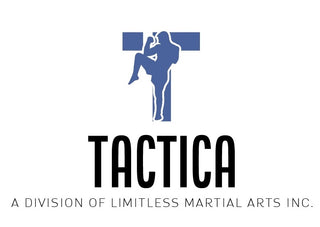How to Stick to Your Goals

Why It’s So Hard to Stick to Your Goals (and How to Make it Easy)
What is the biggest source of failed goals, dreams, and ambitions?
Is it luck? That you just didn’t have the right cards, and so there was nothing you could have done?
Is it talent or method? If you were just smarter and used the right technique, you could have made it work?
I’d like to argue that the vast majority of our struggles in life come down to one simple problem: our actions don’t match our intentions.
The Action-Intention Gap
Think about the last goal you struggled with. Maybe it was losing weight, learning a Martial Art, or starting a business? Why did you struggle?
Sometimes you do everything right—you make a plan, put in effort exactly how you intended to, and things still don’t work out. That can hurt, but most of the time, this isn’t the case.
Instead, our projects flop, and goals fail because we had some intention to do something, and we didn’t follow through.
You started a new exercise habit but gave it up after three weeks.
You thought about trying to learn Martial Arts, maybe even joined a club or downloaded some apps, but then life got in the way.
You’d like to start a business, but you’re not sure what to do, and you’ve never made progress.
This is what I call the action-intention gap. It is the difference between how we would intend to do things, and what happens.
It’s the difference between a great idea and great execution. This is where most of our struggles, failures, and frustrations originate.

How to Close Your Action-Intention Gap
Closing this gap isn’t easy, but there is a fairly straightforward process. It has three steps.
Step One: Understand Your Intentions
The first reason people have a gap is that their intentions clear to begin with. If you aren’t even sure what you intended to do, how could you possibly stick to it?
So many dreams die because they were never more than fantasies. If you want to have any chance of improving your life, it needs to start with being clear about what you intend to do, even if you’re still imperfect about following through on those plans.
Example:
“I’d like to learn Muay Thai” = no clear intentions.
“I’m going to get a membership at a club or online and train Muay Thai 3 times a week” = clear intentions.
The latter person may not follow through, but the first person’s goals are so ill-defined she can’t possibly succeed.
Step Two: Understand Yourself
The next step is harder. It’s not enough to set goals, intentions, or plans. You need to understand the “who” that will be acting on them.
What are your strengths and weaknesses? Why did your goals fail in the past? What obstacles will get in the way and how can you work around them?
If not having intentions is the first cause of failure, the second is imagining an idealized superhero is going to act on your plans and take you magically to success.
That person doesn’t exist. There’s only you!!!
So you’d better align your intentions with the kinds of things you can follow through on.
Example:
You typically start projects with a lot of motivation but give up after a few weeks.
Why don’t you try to set a small and minimum amount of work you’ll actually do each day? Then, even if things get busy, you won’t completely drop the ball.
Step Three: Align Your Intentions
Your end goal has two parts. The first part is that your intentions, if followed, should get you where you need to go.
If you’re trying to launch a company, learn Martial Arts, graduate from college, or lose weight, the plan you set has to at least have a decent chance of working out.
The second part is that your intentions need to be built so that you can act on them. Knowing yourself, and what things in your life, personality, and habits will interfere and/or support your intentions can help you design your project to accommodate your situation.
Alignment is an ongoing process of examining these two parts and responding to the feedback, both positive and negative.
While you’re working on your goal, you’ll see how your intentions are working out, you will also see how well you’re following through on your intentions, and you can adjust both to make progress.
Example (Aligning Intentions with Goal):
You want to lose weight, so you’re trying to fill up your exercise meter on your Fitbit every day. But you’ve been trying it for months, and you haven’t lost any weight.
Therefore, you need to adjust your intentions to something more effective, like cutting down on portion sizes.
Example (Aligning Intentions with Action):
You’re now trying to cut portion sizes, but you find you end up overeating a lot, especially at restaurants. You redefine your plan to eat half your meal and wait twenty minutes before eating the other half (only if you’re still hungry).
Now you’re able to follow through better on your initial idea.
If you need help getting started, speak with a life coach professional. They are key in helping athletes understand themselves, find what drives and motivates them, and discover what’s holding them back. You can find great tips from professionals like Miriam Guevara at MiriamGuevara.com
Finally, come check us out at Limitless Martial Arts Inc.
We are the right school, the right program, the right team to help you succeed.


